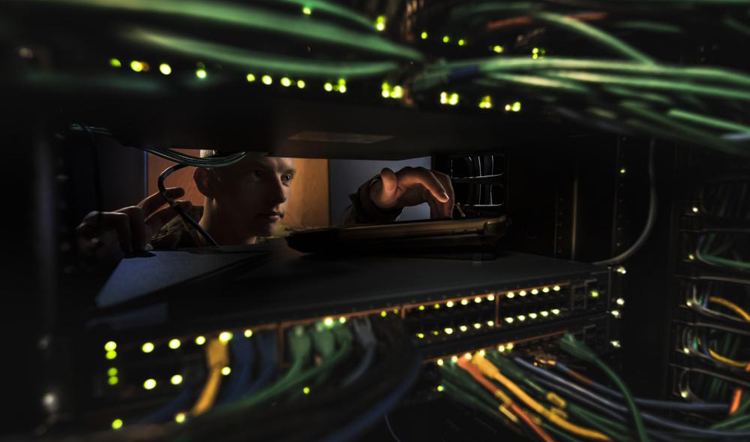INDIAN ARMED FORCES CHIEFS ON
OUR RELENTLESS AND FOCUSED PUBLISHING EFFORTS

SP Guide Publications puts forth a well compiled articulation of issues, pursuits and accomplishments of the Indian Army, over the years

I am confident that SP Guide Publications would continue to inform, inspire and influence.

My compliments to SP Guide Publications for informative and credible reportage on contemporary aerospace issues over the past six decades.
Look Beyond Traditional Contact Warfare
Are we prepared today to foil a cyber-attack on our Railway Network, Banking System or Power Grid? The nature of cyber-attacks is such that it is almost always difficult to pinpoint the source of the attack, giving perpetrating nation-states plausible deniability.
 |
The Author is a former Army Commander South Western, Eastern and Central Army Commands, till recently. Post retirement, he was Chief Commissioner WBRTPS Commission. |

Our preparedness to take on the two neighbouring adversaries, repeatedly announced by our Service Chiefs over the last few years, has perhaps successfully conveyed a message to not only our Nation but maybe, the world at large that we are well placed to take on both the adversaries simultaneously.
China’s Capability Build-up
We are well aware that China has been investing heavily in military modernisation for the last two decades. It is a fact that they enjoy technical superiority in many domains like anti-ship missiles, cyber and space capabilities, even to the extent of posing threat to the US as well. Besides developing anti-access denial and long-range attack capabilities, China, today, is far ahead in the domain of non-contact warfare to include electronic, cyber and space domains. It is believed that in 2019, as part of a cyber campaign, the US utility companies and financial institutions were targeted by the Chinese State-sponsored hacking group APT10.
China is moving rapidly towards modernising the PLA by 2035, creating a world-class force by 2049
China has, reportedly, also test-fired the S-400 long-range SAM system besides developing HQ-19 with ballistic missile defence capability. China thus, looks well beyond the confines of our ‘Northern Borders’, with total emphasis on ‘non-contact warfare’ based on a credible plan in the electronic, cyber and space domains with emphasis on winning wars under informatised conditions duly supported by an overwhelming superiority of force multipliers. China is moving rapidly towards modernising the PLA by 2035, creating a world-class force by 2049.
Cyber Warfare
Are we prepared today to foil a cyber-attack by China on our Railway Network, Banking System or Power Grid? There is, somehow, a belief prevailing that State-sponsored cyber-attacks leading to catastrophic failure of critical infrastructure are unlikely to take place as most countries have mutual as well as collective pacts confirming that cyber weapons will not be used against critical information infrastructures. Moreover, country like Russia has also specifically stated that any attack in the cyber domain will be constituted as an attack in the physical domain and will be retaliated in all domains.

Notwithstanding, one must not overlook the fact that even though, there are pacts in place wherein countries have committed to not using cyber warfare against one another, but the nature of cyber-attacks is such that it is almost always difficult to pinpoint the source of the attack. Thus, giving nation-states plausible deniability. Like the 2015 attack on Ukraine’s port infrastructure and power grid, was very evidently at a time which was favourable to Russia’s strategic interests, even after multiple attacks it could never be traced back to Russia. As reported by Indian Express on January 15,2022, the US has once again accused Moscow of sending saboteurs into Eastern Ukraine to stage an incident that could provide the Russian President with a pretext for ordering an invasion of the country.
India’s non-traditional combat capabilities
Interestingly as quoted by Economic Times, in the year 2015 winter session of Parliament, a BJP Rajya Sabha member Tarun Vijay demanded setting up of a separate ministry for cyber security, warning that the Third World War would be a 'cyber war', and that India was the "second largest victim" of these cyber-attacks in the world, totalling nearly 50,000 cyber-attacks in just five months of that year affecting nearly half of India’s internet population. He further added that India despite being a software capital of the world, still did not have a state-of-the-art cyber lab in the country. He suggested all MLAs and MPs be given training on various aspects of cyber security and suggested setting up a proper cyber laboratory in the country.
Technology is the backbone of any military power. While we have a strong IT sector in the civilian arena but somehow, cyber-warfare capabilities have not been prioritised for far too long.
Technology is the backbone of any military power. While we have a strong IT sector in the civilian arena but somehow, cyber-warfare capabilities have not been prioritised for far too long. Besides the land, sea, air and space, the cyber domain has become a very critical dimension of today’s warfare. Today, all major developed countries are rapidly enhancing their capabilities in cyber, space, robotics, directed energy and electronic warfare.

Though, India is slowly moving forward through developing risk mitigation strategies, building firewalls and recovery systems as well as integrating cybersecurity resources of the Army, Navy and IAF to counter China’s capability to launch devastating cyber-attack, the major difference lies in our absence of cyber-attack capabilities. Indian Army has taken some initiative to establish cyber labs to start training the younger generation and help them to master this domain. This is a good initiative to educate our officer cadre to be able to grasp and understand better the changing dynamics of the hidden threat. While this will definitely help in increasing the awareness within the rank and file, but what is actually needed to be done is that young boys from the civil domain must be identified who are found excelling in hacking capabilities and be clandestinely hiredand built as a team. Put ten of such guys in a room together with the best equipment and see the kind of ideas they will come with.It will be very interesting to read about Frank Abagnale, a convicted felon, who worked for FBI and draw lessons.
Though, India is slowly moving forward to counter China’s capability to launch devastating cyber-attack, the major difference lies in our absence of cyber-attack capabilities
It goes without doubt, saying that, if we are looking at continuing with the initiative of maintaining strategic autonomy without falling to any binding alliance, then we have no option but to emerge as a regionally dominant power rising well above our current fixation with two front land border war since the "frontlines" have now become blurred. We could be looking poignantly at the mountains, waiting for the enemy to attack, but the enemy would have already penetrated our defences in the cyber domain. We thus need to look beyond traditional contact warfare developing Cyber and Digital capabilities as a robust response to emerging threat from the adversaries in this domain.





